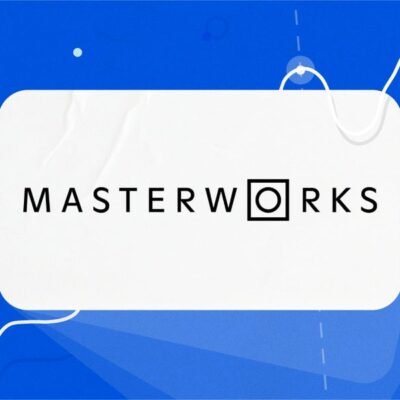An article by Fabian Ritter, head of community at CAST Studios
The way art is created, sold and owned will change forever. Yet the question remains: is digital artwork worth the investment?To answer this question, let’s look closely at the two core elements: Art and Digitisation.
Modern digital art concepts
The digital art revolution has democratised the art market and ushered in a new era that has not only expanded the creative boundaries of artists, but has also fundamentally changed the art market and investment opportunities. Digital art utilises the power of modern technology, such as blockchain, to create artworks that could not exist in the physical world. This development has led to unprecedented accessibility and interactivity that challenges traditional notions of art and its commercialisation.
A key advantage of digital art is its easy accessibility. Artists can distribute their works via the internet and thus reach a global audience. Here, artists are able to sell their work directly to collectors without the traditional gatekeepers. This not only opens up new revenue streams for artists, but also offers collectors unique investment opportunities. In addition to accessibility, digital art is characterised by innovation and interactivity, creating a truly new art market.
Of course, there are also challenges. These include the fact that the market for digital art is particularly volatile and prices can fluctuate greatly. Nevertheless, those who understand and carefully select the art and the technology behind it can realise considerable profits. The keys to success are research, diversification and a deep understanding of the rapidly evolving landscape of digital art and the technology behind it.
Traditional Vs. Digital art
Digital art differs from traditional art in several key aspects. While traditional artworks are based on physical media, digital art often exists only in electronic form. This raises questions about its originality and collectability, as digital artworks, unlike physical ones, are infinitely reproducible without losing quality. The digital art market often utilises online platforms and digital certificates such as Non-Fungible Tokens (NFTs) to verify authenticity and ownership, which is a contrast to the traditional art trade. CAST Studio’s platform and the link to its cryptocurrency Castello Coin offers this opportunity.
Digital art offers exciting new opportunities for investors. But despite everything, many interested investors still lack one thing above all: trust.
Digital art is only really becoming a relevant investment object thanks to cryptocurrencies such as the Castello Coin. Blockchain technology creates unprecedented decentralisation. NFTs based on blockchain technology make it possible to treat digital artworks as unique assets. They therefore herald a new era. Yet currently, only a low single-digit percentage of the world’s population has invested in cryptocurrency. Why? CAST Studio has identified four key challenges:
- young market with few reliable sources of advice
- technology is complex and difficult to understand
- lack of trustworthy custody options
- lack of emotional connection and human elements
The experts are sure that in order to strengthen trust in the digital component of digital art, there must be a bridge between this new world and the familiar, analogue world. The solution to this is the Castello Coin, which builds bridges by using a physical work of art as a brand ambassador. It is the first coin in the world to utilise a brand ambassador – a work of art made from 24-carat gold. In this way, it positions itself as trustworthy “digital gold”.
As the currency of CAST Studios, the Castello Coin enables investments in digital artworks that are offered on the specially created platform. By utilising blockchain technology, Castello Coin guarantees the authenticity and provenance of each artwork, which is invaluable for investors. Other direct responses to the aforementioned challenges include being based in Switzerland and the associated maximum security and transparency standards as well as exclusive custody and account options.
Conclusion
We are on the cusp of a paradigm shift in art investment, which is more transparent, accessible and diverse than ever before. Ultimately, the question of whether it is worth investing in digital art is primarily a question of whether you can build the necessary trust. But for those who are ready to take the path of the digital revolution, the Castello Coin with the CAST platform offers not only opportunities to invest in digital art, but also a change of perspective on how we value and experience art. The digital art revolution is in progress, and it is undoubtedly worth a deeper look.





